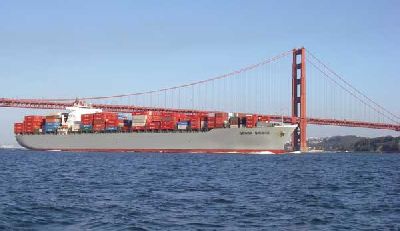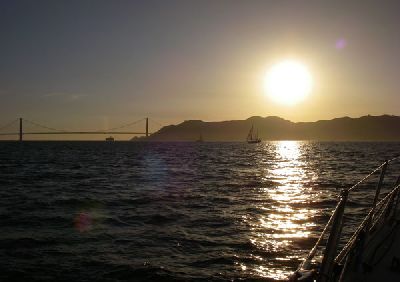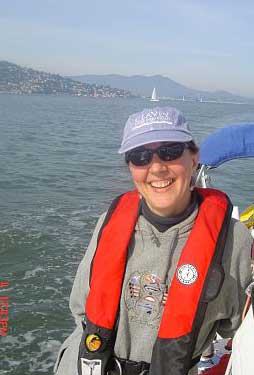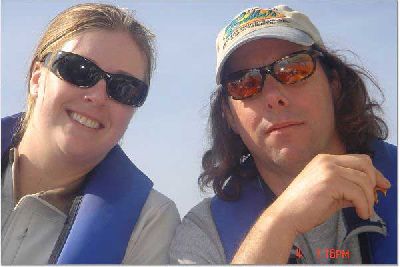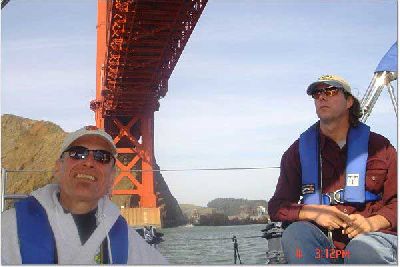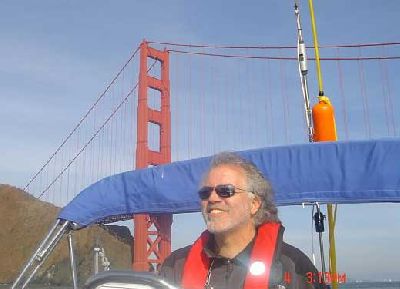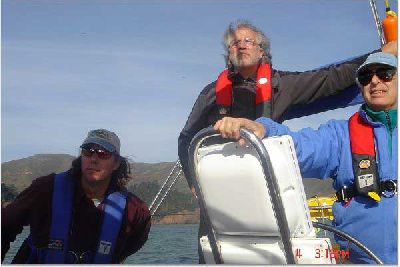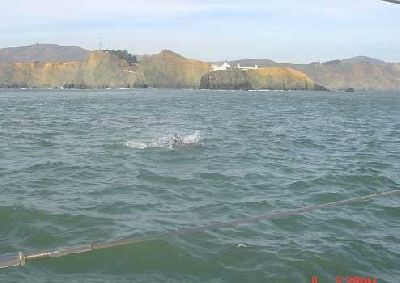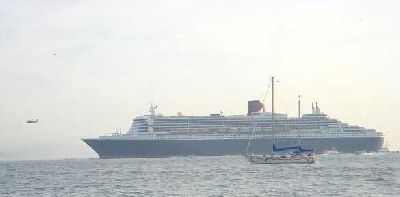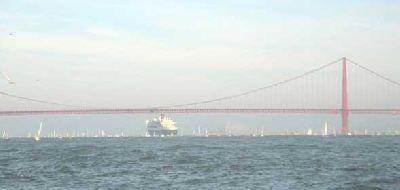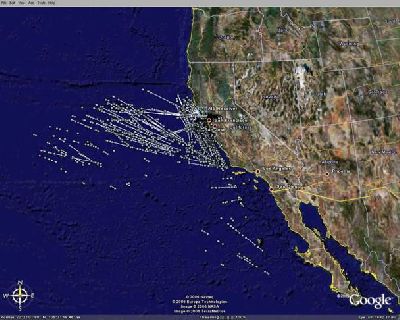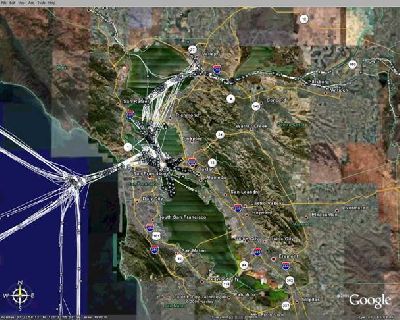As I promised, some more musings:
During the ’06 race, we made some decisions that in hindsight could have been better. I allowed my optimism to take us too far northwest and into the southeast ridge of the Pacific High. I was following the guideline that “slower boats should sail closer to the rhumbline”, and was gambling on some suggestions that the Pac High would shift further north than the forecasts were predicting. Perhaps this would have paid off some other year, but it certainly didn’t in ’06.
Just as bad, we didn’t know how badly our speed would suffer when we were running dead downwind. There will be an optimum angle (depending on windspeed), and we were much too conservative — we should have sailed at hotter angles. Chalk this up to lack of experience, and we will want to have much better information on this aspect of VALIS’ performance.
Rich mentioned “Expedition” — this is a navigation and weather-routing program that I recently purchased. The navigation part of the race is fairly trivial (at least unless the GPS satellites get shot down), but Expedition does this as well or better than the Raymarine program I used in 2006. Where Expedition shines for us is in its weather-routing capabilities. Expedition is able to take the gribfiles (“GRIdded Binary” weather predictions) that we get via radio email while at sea, and using the polars (which describe how fast the boat goes under varying wind speeds and angles), it will calculate the best course to sail. The Raymarine program also did this, but it was buggy and didn’t work nearly as well.
This is all good, but there are some caveats. GIGO still applies. Even the most carefully collected and calculated polars are at best an approximation of real-world performance, and the data I have for VALIS is pretty rough. Also important is the sea-state — swell height, shape, and direction all have an impact on sailing performance. A serious racing program will have collected this type of data, but guess what: I’m not that serious!
Even more important, the weather predictions are pretty good for a few days out, and progressively become more chaotic the further out you try to guess. Since the race will last perhaps 13 days, what looked like a good strategy at the start can become pretty bad halfway through.
“No battle plan ever survives contact with the enemy.” – Field Marshall Helmuth Carl Bernard von Moltke.
Still, you need to have a strategy, and Expedition gives us some good tools to use as we build ours, and adjust it to meet the evolving conditions. I do have performance logs from our 2006 Pac Cup race that were collected by the custom software I ran on my PocketPC, and I will be crunching that data to put together the polar data for VALIS. We will fine-tune this information during our pre-race sailing, and we can even adjust it during the race if we discover that our actual performance is much different from the predicted.
I also have saved all the GRIB files from the ’06 race, and can use these with Expedition to help validate our polars against the recorded data.
As Rich suggested, you can download a trial version of Expedition, or a reduced-capability version, from their website: http://www.iexpedition.org/
In addition to tactics and strategy, we also need a philosophy. Mine is to race as well as we can, but only as long as we are enjoying ourselves. The new spinnakers we will be flying should help, as should the larger crew.
Please don’t think that I’ve forgotten what this is really about: Sailing. I am looking forward to a glorious experience as we sail down the chilly coast and through the warm tradewinds towards Hawaii.
Merry Christmas!
-Paul
